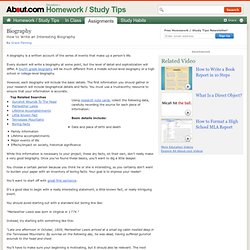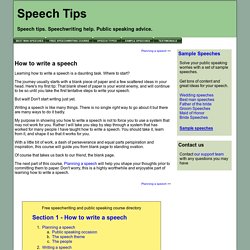

Descriptive Writing Exercises: Creative Writing Lesson Assignments for Description. Here’s a simple writing exercise to help you find a comfortable level of description in your creative writing, followed by further exercises to refine the use of description.

Descriptive Writing Exercise #1 Take a walk around the block. Look at everything – people, cars, trees, flowers, trash, sky, etc.Write a description of your walk, using every appropriate adjective when describing what you saw. Don’t worry about using too many – this is supposed to be overblown.Write a second description of your walk without using any adjectives or descriptive phrases. Now that you’ve done both overblown and bare-bones versions, re-write your walk using a comfortable number of adjectives. Descriptive Writing Exercise #2 Go back to your final version for more revisions: Can you use a stronger noun and delete an adjective? Writing Descriptive Paragraphs - How to Write Descriptive Paragraphs in English for ESL Learners.
Writing descriptive paragraphs can be successful as one of the first writing activities for students.

Start by helping students understand the difference between simple and complex sentences, and move on to practice writing complex sentences. Students should also be familiar with a wide range of descriptive adjectives. Start by having students answer basic questions below. Next, use the writing exercise to expand the answers into a well formed descriptive paragraph. Descriptive paragraphs are often used to describe what a person looks and acts like. Here is an example of a descriptive paragraph: I am forty years old, rather tall and I have blue eyes and short black hair. Written Exercise I Answer these questions about yourself on a piece of paper. How old are you? Now that you have the information about yourself ready. I am _________ years old, I _________________ (your looks). Practice. How to Write a Biography. How to Write a Biography Biographies are delightful fun essays that most students enjoy writing. According to Webster's Dictionary, a biography is—1: a written history of a person's life; 2: biographical writings as a whole; 3: an account of the life of something (as an animal, a coin, or a building).
In your class work, Biographies will be simple (and usually quite short) essays about someone else's life. An autobiography on the other hand, is a story (or essay) about your own personal life. As this section is about Biographies, you must keep yourself out of the essay altogether. Biography - How to Write an Interesting Biography. A biography is a written account of the series of events that make up a person's life.

Every student will write a biography at some point, but the level of detail and sophistication will differ. A fourth grade biography will be much different from a middle school-level biography or a high school or college-level biography. However, each biography will include the basic details. The first information you should gather in your research will include biographical details and facts. You must use a trustworthy resource to ensure that your information is accurate.
Using research note cards, collect the following data, carefully recording the source for each piece of information: Basic details include:Date and place of birth and death Family information Lifetime accomplishments Major events of life Effects/impact on society, historical significanceWhile this information is necessary to your project, these dry facts, on their own, don't really make a very good biography.
How to Write a Biography. Homework Center: How to Write a Biography. How to write a speech. Learning how to write a speech is a daunting task.

Where to start? The journey usually starts with a blank piece of paper and a few scattered ideas in your head. Here's my first tip: That blank sheet of paper is your worst enemy, and will continue to be so until you take the first tentative steps to write your speech. But wait! Don't start writing just yet. Writing a speech is like many things. My purpose in showing you how to write a speech is not to force you to use a system that may not work for you. With a little bit of work, a dash of perseverance and equal parts perspiration and inspiration, this course will guide you from blank page to standing ovation. Of course that takes us back to our friend, the blank page.